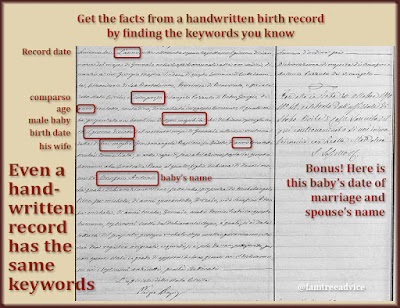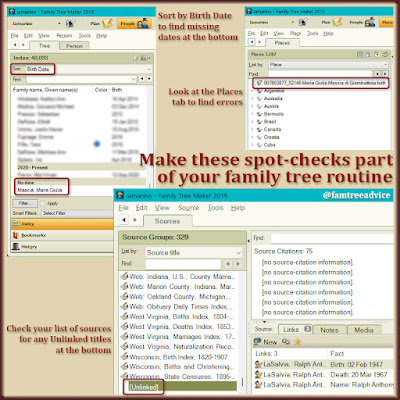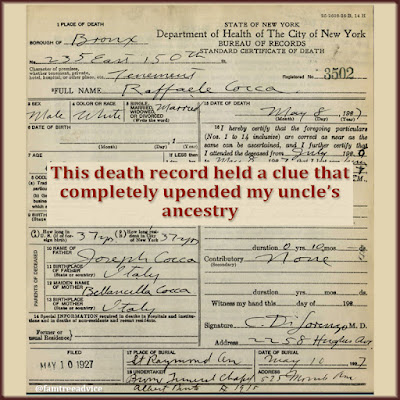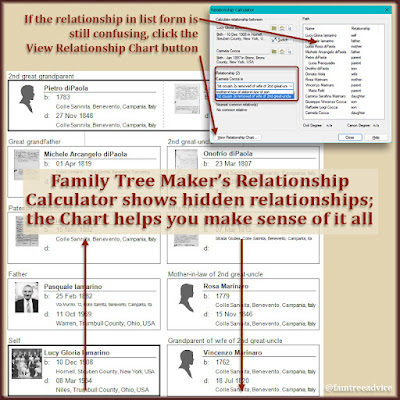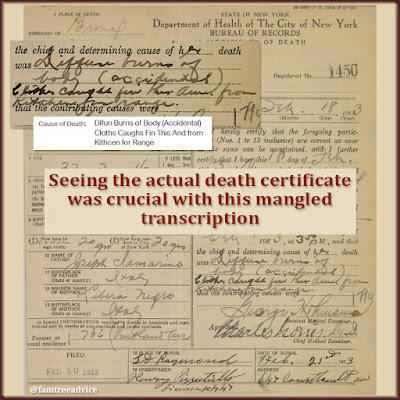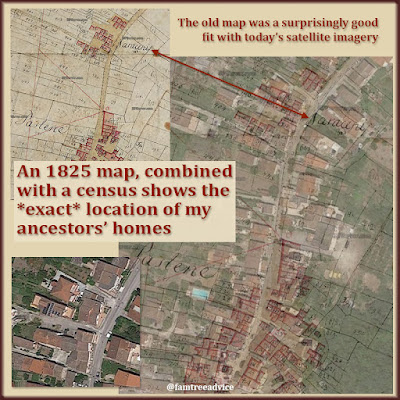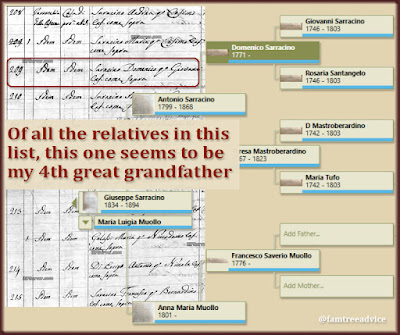I had a profound family tree breakthrough thanks to a WWII draft registration card. My grandmother and her sisters used to tell us the family came from Avellino. But Avellino is both a city and a province in Italy. Where did the family come from?
The answer came from an unexpected source. Grandma's uncle, born in 1877, was among the oldest men registered for U.S. military service in World War II. It's known as the Old Man's Registration. They weren't called to service, but the government wanted to be able to do so.
My great granduncle Semplicio's 1942 draft card put an end to the mystery of my family's origins. I was happy enough to have found a birth date for him. Then I saw the Place of Birth field on his registration card. It said "Tofo" along with the unusual addition of "Province Avilino."
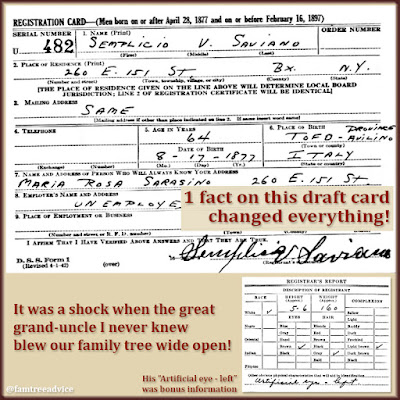 |
| You never know which standard genealogy document will be a complete game-changer. |
"Avilino" is clearly a misspelling of the Avellino province I always knew he came from. But is "Tofo" a town? A quick look at Google Maps gave me the answer. The town is Tufo, Avellino. An answer at long last!
I went on to find Semplicio's Tufo birth record, along with that of an unknown brother who died as a child. Then I discovered I had much deeper roots in the neighboring town of Santa Paolina. Today I can tell you the names of my 7th great grandparents from that town.
Widen Your Search
Not every draft registration card will be this fruitful for your family tree. But the possibility of a breakthrough is always there. Don't stop your draft card search at your grandfathers and great grandfathers. You never know what you might learn from your great granduncles.
Here are the critical pieces of information you can hope to find on World War I and II U.S. draft registration cards.
1. Name. You may discover a full name you didn't know. His friends called Semplicio Sam, but his cards spell out Semplicio. One even gives his middle initial.
2. Place of Residence (or Permanent Home Address for WWI). Semplicio had a ton of kids and a wife who died young. His address changed often. During World War I, he's living in the building he co-owned with my great grandfather at 603 Morris Avenue. During World War II, after his wife died, he's living with his sister at 260 E. 151st Street. What a surprise it was to learn those 2 addresses are different entrances to the same building. I knew 603 as a commercial building and 260 as the house where my family lived.
3. Date of Birth. This may be your first sighting of a relative's birth date. Remember that your older relatives weren't always aware of their actual birth date. You may see variations. My grandfather Adamo's birth date on his WWII draft registration card gets the day and year wrong. Only the month is correct. And it says he's from Naples. He's not from Naples.
4. Name and Address of Person Who Will Always Know Your Address (or Nearest Relative for WWI). You may learn a spouse's name from this card. Semplicio's 1942 card proves he was living with his sister (my great grandmother). I can overlook the misspelling of her last name.
5. Employer's Name and Address (plus Occupation for WWI). Semplicio had no job in 1942, but I found a surprise on his WWI card. In 1918, he was a Special Patrolman for the City of New York at the 45th Precinct in the Bronx. Semplicio had many jobs over the years, but this one is the biggest surprise to me.
6. Description of Registrant. This is a terrific bonus for relatives you didn't know personally. Height, weight, color of eyes, hair, and complexion. Then there's the "obvious physical characteristics" section. Semplicio had an artificial left eye. I asked my mom if she thinks that's why she was so afraid of her great uncle as a little girl. She said, "I'm sure it was!"
7. Citizenship. The World War I draft registration card can tell you the citizenship status of your relative. One version asks, "Of what country are you a citizen?" Another version asks if they are a native born or naturalized U.S. citizen. If they're not a citizen, it asks if they are a declarant.
Plus, there's a signature!
Any one of these categories could prove to be a valuable lead for your family history research.
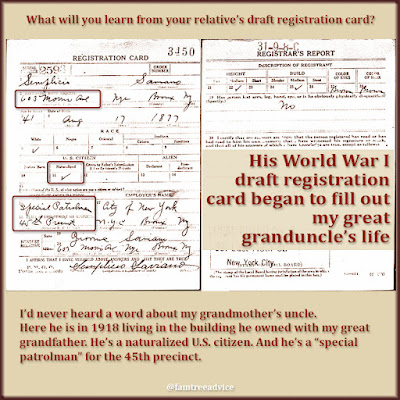 |
| My great granduncle had a number of surprises for me in his draft registration cards. |
Know Who Not to Look For
If you haven't found your relative's draft registration card, they may not have fit into the age range. Here are the requirements:
- World War I Draft (1917–1918): Born between 11 September 1872 and 12 September 1900.
- World War II Draft (1940–1947): Born between 1896 (44 years old in 1940) and 1929 (18 years old in 1947).
- World War II Old Man's Registration: Born between 28 April 1877 and 16 February 1897.
My great grandfather Giovanni, born in 1876, was too old for the Old Man's Registration. My grandfather Pietro, born in 1902, was too young for the World War I draft, although he wasn't in America yet. I did find him in the World War II Young Men's Draft at age 39. There was a big payoff on his registration card. It's the one-and-only known use of my grandmother's middle name, Gloria. At last I had confirmation of the mysterious middle initial G on their marriage register.
Be sure you don't waste your time (as I did) searching for someone who won't be there. But do gather up all the men in your family tree who fit the dates, and track down their draft registration cards. Let me know what surprises and treasures you find.


